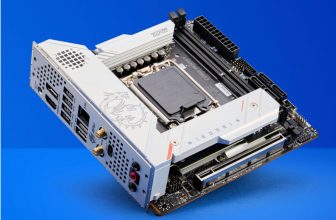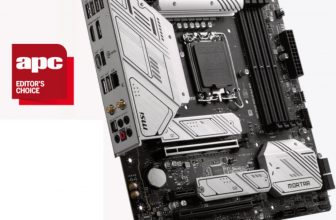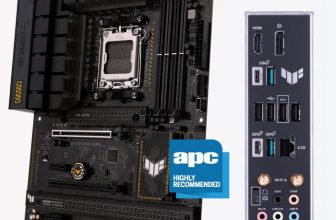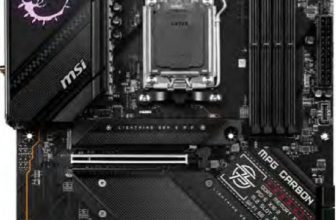Asus ROG Crosshair VII Hero WiFi Review
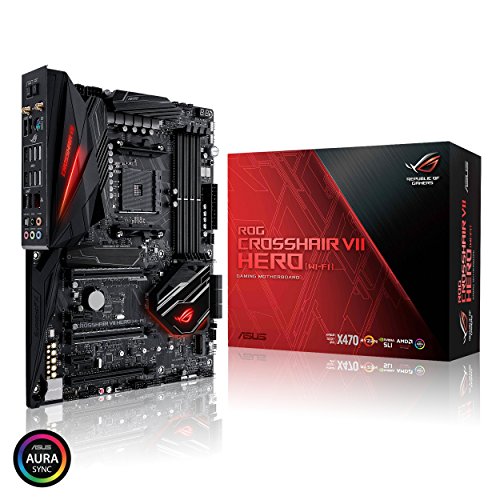
Asus ROG Crosshair VII Hero WiFi Review – A little over a year ago, we were battling with some gremlins with various X370 boards, one of which was the Asus Crosshair VI Hero, until Asus released a spate of EFIs (as did other manufacturers) to improve memory support and stability. Fast forward to 2018, though, and its successor, the ROG Crosshair VII Hero WiFi, is solid as a rock and bristling with features too.
Table of Contents
[sc name=”Youtube”]
You’d expect nothing less, though, as it costs a whopping £ inc VAT.
Providing plenty of power to AMD’s new Ryzen CPUs is a key focus, with a lot of boards on test this month and the ROG Crosshair VII Hero WiFi has two huge heatpipe-linked VRM heatsinks, a 10+2 power phase design and an additional 4-pin power connector for the CPU too. The primary M.2 slot also sports a heatsink and, unlike many other boards on test, this heatsink can be swapped to the lower slot. The upper M.2 slot isn’t placed under the graphics card either.
The M.2 SSD delta T of 29°C was the second lowest on test, only sitting behind the monstrous dual heatsink of the MSI X470 Gaming M7 AC.
Also, while the other boards on test are limited to two PCI-E lanes on one M.2 slot, the ROG Crosshair VII Hero WiFi can provide four PCI-E lanes on either slot. Using a PCI-E NVMe SSD in the lower slot will see the primary 16x PCI-E slot reduced to eight lanes, but this doesn’t usually result in noticeable performance drops. You get the full complement of overclocking and testing tools and a trio of USB 3.1 ports too, comprising Type-A and Type-C ports on the I/O panel, and a Type-C header on the PCB for compatible cases.
Asus includes a pair of 4-pin standard RGB LED headers, as well as two 3-pin 5V addressable RGB LED headers, and there’s plenty of RGB lighting on the board itself too. There’s a total of nine fan headers, three of which are handily located next to the CPU socket, catering for pumps and coolers with two fans.
This board’s integrated I/O shield looks great too, while also making board installation easier. The rear panel sports USB BIOS flashback and clear-CMOS buttons as well as an Intel-powered LAN port, 802.11ac Wi-Fi
You get the full complement of overclocking and testing tools
aerial ports and a total of 11 Type-A USB ports, nine of which support USB 3 or faster.
The ROG Crosshair VII Hero WiFi was a little slow at stock speed, but it was quicker once we’d overclocked our Ryzen 7 2700X. The EFI is excellent, although one niggle is that the ability to change a fan’s temperature source isn’t located in the main fan control section like other boards – that’s our only criticism though. Using a vcore of 1.425V, the board reached the second highest frequency on test of 4.275GHz. This overclock saw the system score rise from 196,624 to 206,864, and the Crosshair had the best audio on test too, with a dynamic range of 113.1dBA and noise level of -113.6dBA.
Asus ROG Crosshair VII Hero WiFi Review: Conclusion
Asus has nailed the Crosshair this time, producing a superb motherboard for AMD’s Ryzen CPUs. It has one of the biggest feature sets on test, it overclocks well, it looks great and its EFI is comprehensive. Its only problem is its price in this highly competitive field. The Gigabyte X470 Aorus Gaming 7 WiFi’s better looks, similar features and £ lower price make it the better buy, but only just.
Asus ROG Crosshair VII Hero WiFi Review: VERDICT
When you purchase through links on our site, I may earn an affiliate commission. Here’s how it works.
Asus ROG Crosshair VII Hero WiFi Review: SPECIFICATIONS
Chipset AMD X470
CPU socket AMD Socket AM4
Memory support 4 slots: max 64GB DDR4 (up to 3600MHz)
Expansion slots Two 16x PCI-E 3, one 16x PCI-E 2, two 1x PCI-E 3
Sound 8-channel Realtek ALC1220 Networking Intel Gigabit LAN, 802.11ac Wi-Fi Overclocking Base clock adjustment max CPU multiplier 64x; max voltages: CPU 1.7V, RAM 2.15V
Ports 6 x SATA 6 Gbps (X470), 2 x M.2, 1 x USB 3.1 Type-A, 1 x USB 3.1 Gen 2 Type-C, 8 x USB 3, 2 x USB 2, 1 x LAN, 5 x surround audio out S/PDIF out
Dimensions (mm) 305 x 244




